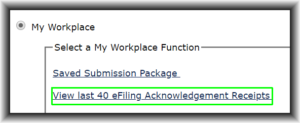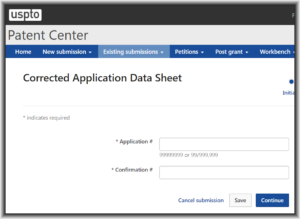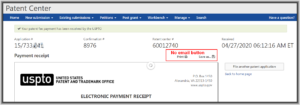
Private PAIR has a feature in “Search by Customer Number” called “Applications with Status Changes”. You can see it quoted at right. The feature is extremely helpful. Every night, shortly past midnight, I use this feature to check for cases in my firm’s portfolio that have had recent status changes. It helps us serve our clients better.
And Patentcenter lacks this feature. I reported this need to the USPTO back in September of 2018 (see article).
You can sort of fumble around in Patentcenter and try to find similar information. You can go into your “workbench” and sort on “status date”. And then you can click on an application of interest, and look around it in that application to see what the status change is about, report it to the client and so on. But then when you are done, Patentcenter will have lost everything about what you were doing. You will have to go back to your workbench again, and sort on “status date” again, and then try to figure out where in the resulting list you had been, to figure out which case to look at next.
USPTO has said many times that one of its goals is to provide, in Patentcenter, each of the user features that is provided in Private PAIR and in EFS-Web. Part of fulfilling that goal would be to provide this “Applications with Status Changes” feature in Patentcenter, just as in Private PAIR.
This is feature request FR3.






